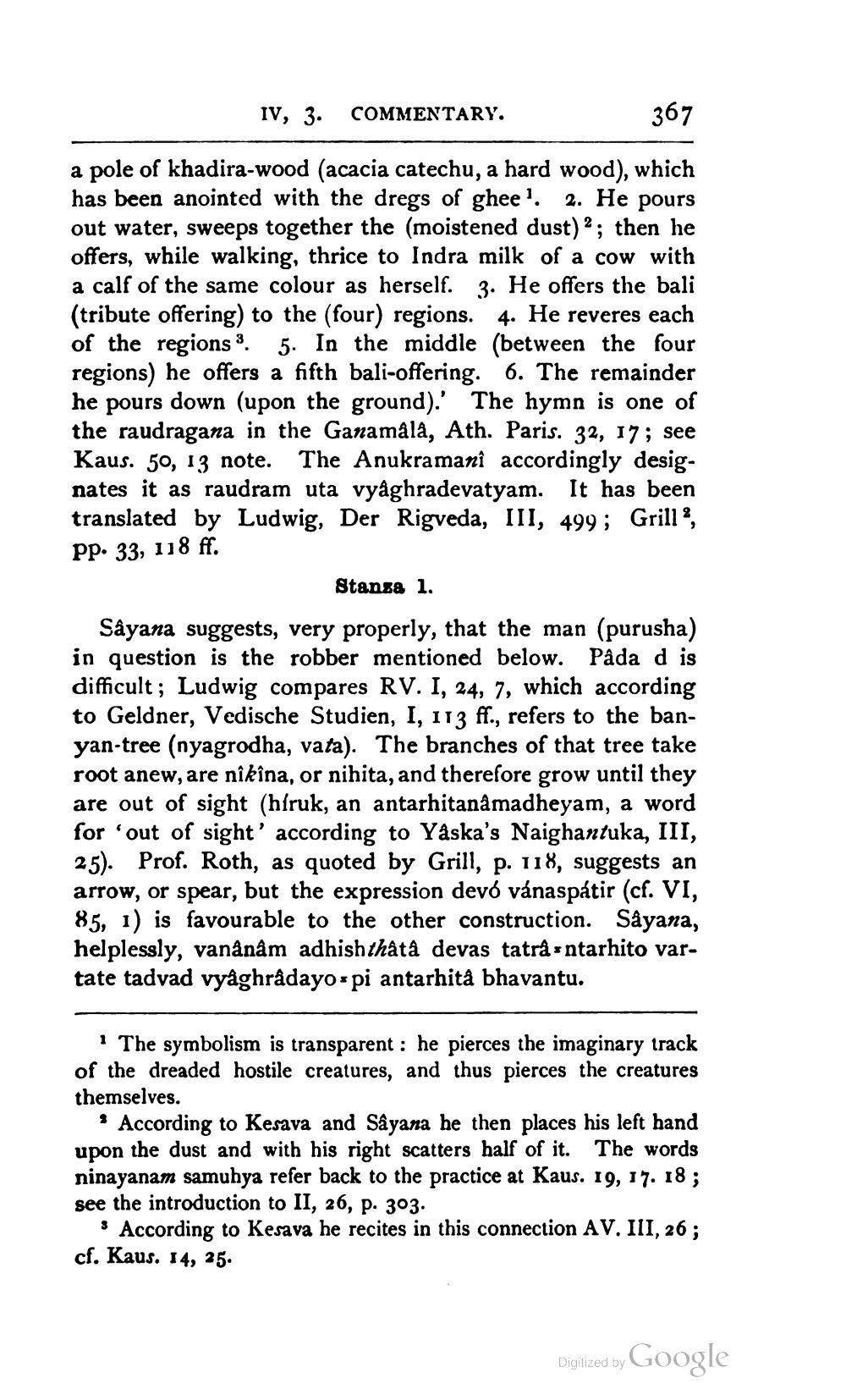________________
IV, 3. COMMENTARY.
367
a pole of khadira-wood (acacia catechu, a hard wood), which has been anointed with the dregs of ghee1. 2. He pours out water, sweeps together the (moistened dust) 2; then he offers, while walking, thrice to Indra milk of a cow with a calf of the same colour as herself. 3. He offers the bali (tribute offering) to the (four) regions. 4. He reveres each of the regions 3. 5. In the middle (between the four regions) he offers a fifth bali-offering. 6. The remainder he pours down (upon the ground).' The hymn is one of the raudragana in the Ganamâlâ, Ath. Paris. 32, 17; see Kaus. 50, 13 note. The Anukramanî accordingly designates it as raudram uta vyâghradevatyam. It has been translated by Ludwig, Der Rigveda, III, 499; Grill, PP. 33, 118 ff.
Stanza 1.
Sâyana suggests, very properly, that the man (purusha) in question is the robber mentioned below. Pâda d is difficult; Ludwig compares RV. I, 24, 7, which according to Geldner, Vedische Studien, I, 113 ff., refers to the banyan-tree (nyagrodha, vata). The branches of that tree take root anew, are nîkîna, or nihita, and therefore grow until they are out of sight (híruk, an antarhitanâmadheyam, a word for 'out of sight' according to Yâska's Naighantuka, III, 25). Prof. Roth, as quoted by Grill, p. 118, suggests an arrow, or spear, but the expression devó vánaspátir (cf. VI, 85, 1) is favourable to the other construction. Sâyana, helplessly, vanânâm adhishthâtâ devas tatrântarhito vartate tadvad vyâghrâdayo pi antarhitâ bhavantu.
1 The symbolism is transparent: he pierces the imaginary track of the dreaded hostile creatures, and thus pierces the creatures themselves.
8 According to Kesava and Sâyana he then places his left hand upon the dust and with his right scatters half of it. The words ninayanam samuhya refer back to the practice at Kaus. 19, 17. 18; see the introduction to II, 26, p. 303.
According to Kesava he recites in this connection AV. III, 26; cf. Kaus. 14, 25.
Digitized by
Google




